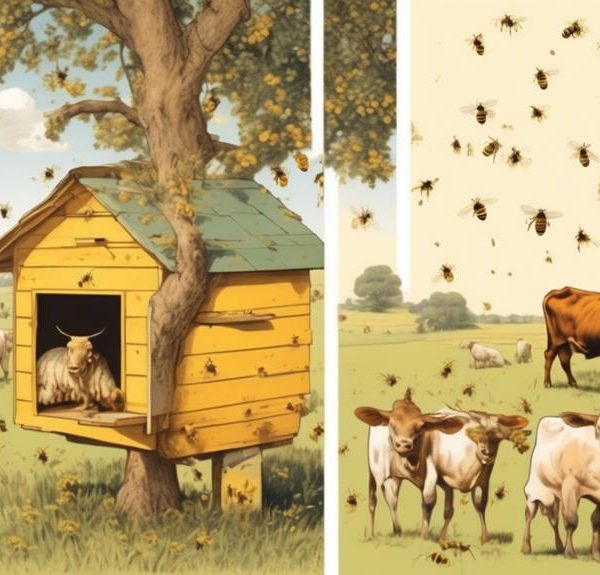Grasp the complex relationship between honey bees, wasps, and waspinators in this intriguing exploration that defies simple answers.
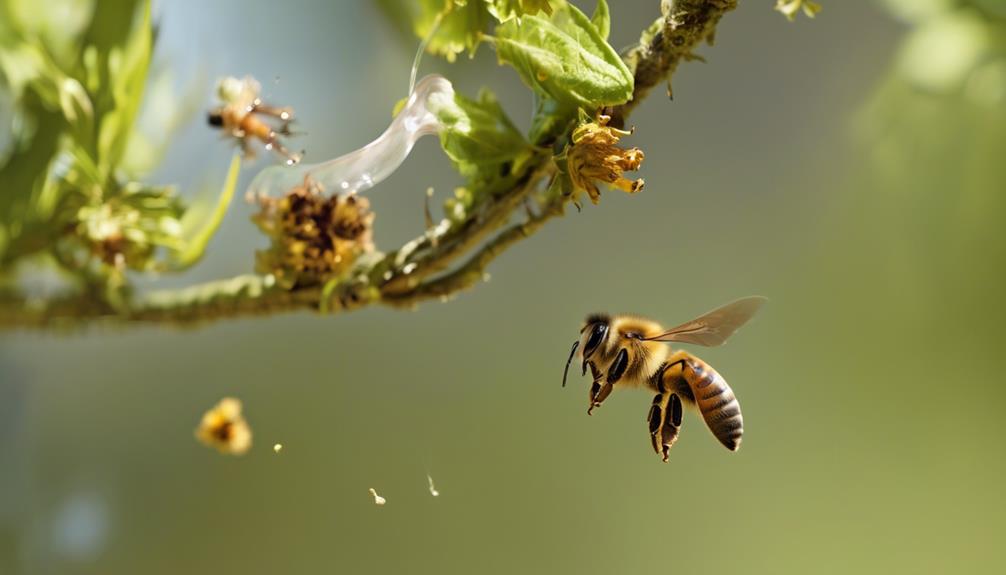
Are Honey Bees Frightened by Waspinators
Imagine you're a gardener, standing in your flourishing oasis with the buzz of bees dancing in the air like a symphony. Just as bees are crucial to your garden's success, understanding their behaviors becomes vital too.
You've likely heard of waspinators, those faux wasp nests marketed as a deterrent for wasps. But have you ever wondered if these waspinators also frighten off our helpful honey bees? The answer isn't as straightforward as you might think.
Delving into this question will lead us on an intriguing journey into the world of honey bees, wasps, and the nuanced relationships between them.
Key Takeaways
- Honey bees may alter their communication dances near waspinators.
- Foraging bees might avoid areas with waspinators present.
- Scientific studies indicate waspinators can deter wasps from nesting nearby.
- Honey bees may not perceive waspinators as threats, impacting their behavior.
Understanding Waspinators: A Brief Overview
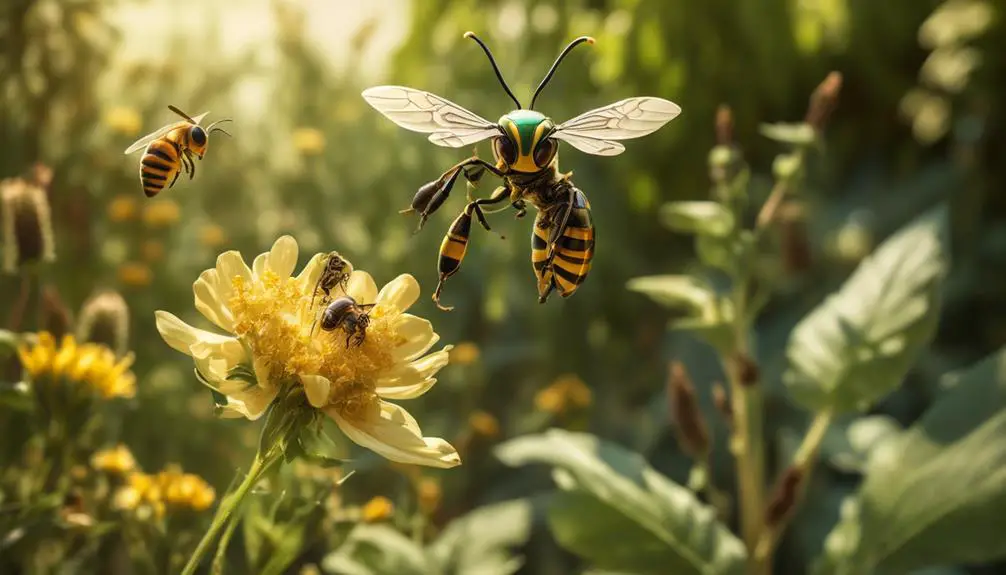
Before diving into the relationship between honey bees and waspinators, it's crucial to understand what a waspinator is and how it functions.
A waspinator is a pest control device, designed to mimic the nest of a wasp. It's typically shaped like a pear, with a pointed end and a larger, rounded top. The theory behind it's simple yet ingenious: other wasps and insects, including honey bees, supposedly avoid areas with existing wasp nests, to prevent territorial conflicts.
You might be curious about the material used for waspinators. They're usually made from weatherproof, lightweight polypropylene. This ensures that they can endure harsh weather conditions while being easy to install. As for functionality, you don't need to refill or replace anything; it's a hassle-free solution.
However, there's a catch. The effectiveness of waspinators is heavily debated among experts. Some believe they're efficient deterrents while others argue that they don't work consistently. This contention forms the crux of our main topic – the relationship between honey bees and waspinators, which we'll explore in the subsequent sections.
As a reader, it's important for you to grasp this foundational knowledge to understand the ensuing discourse.
The Intricate World of Honey Bee Behavior
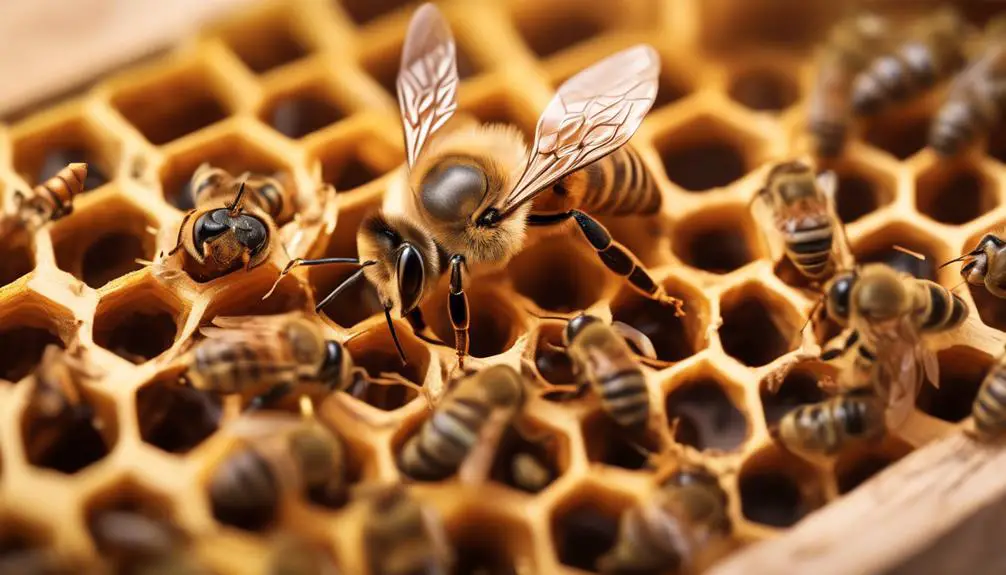
Peering into the intricate world of honey bee behavior, you'll find that these tiny insects exhibit complex patterns and social structures that play a significant role in their interaction with objects like waspinators. They're not merely mindless drones but highly organized and cooperative members of a greater whole, their hive.
Behavior | Purpose | Interaction with Waspinator |
|---|---|---|
Foraging | Gather resources for the hive | May avoid areas with waspinator presence |
Dancing | Communicate location of resources | The dance may change if a waspinator is present |
Stinging | Defense mechanism | Only used if the bee perceives a direct threat |
Foraging bees may avoid areas where a waspinator is present, as they interpret it as a threat. Their famous 'waggle dance', used to communicate the location of resources, may also change if they sense waspinator presence. Lastly, the stinging, a bee's last resort of defense, may be triggered if they perceive a waspinator as a direct threat. However, it's crucial to understand that individual behaviors can vary widely, and what's true for one bee or hive may not hold for another. This complexity is part of what makes studying honey bee behavior both challenging and fascinating.
How Honey Bees Interact With Wasps

In understanding how honey bees interact with wasps, it's essential to note that these encounters can range from peaceful coexistence to violent confrontations, largely depending on the species of wasp and the specific circumstances.
Certain wasp species, such as the European Hornet, raid honey bee colonies to feed their developing larvae. You'll find that bees, in response, have evolved defensive tactics. They'll cluster around the intruder in a behavior known as 'hot defensive bee balling', generating heat and carbon dioxide to kill the wasp.
However, not all interactions are hostile. Some honey bees and wasps share similar foraging grounds without conflict, coexisting peacefully. You need to understand that this peaceful interaction is due in part to bees and wasps having different dietary preferences. Honey bees are primarily herbivores, feeding on nectar and pollen, while wasps, being omnivores, feed on a variety of insects and food waste.
Scientific Studies on Honey Bees and Waspinators
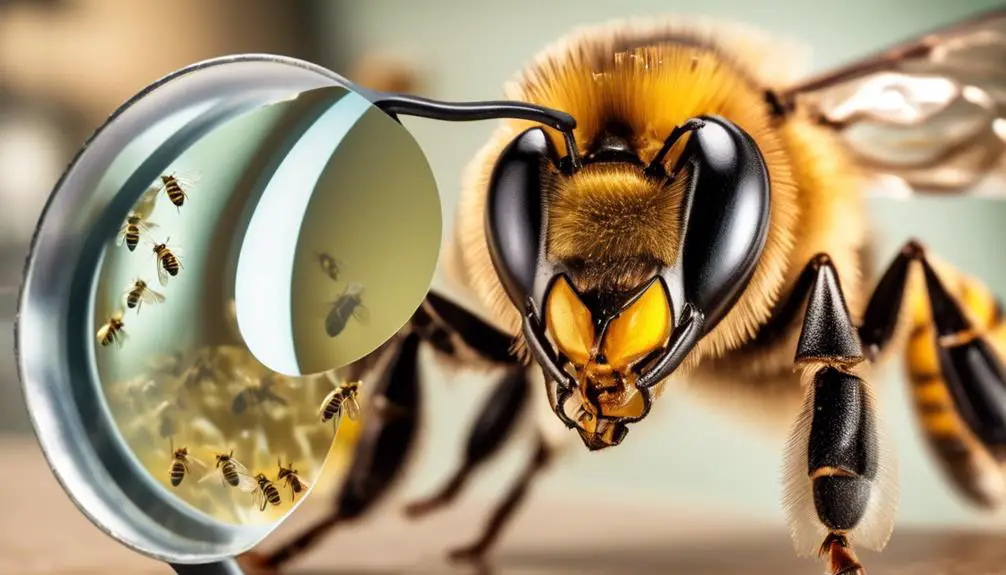
Given these interactions between honey bees and wasps, it's intriguing to consider the impact of waspinators – fake wasp nests used ostensibly to deter wasps – on the behavior of honey bees.
Some scientific studies have been conducted to understand this interaction. You'll find that the consensus isn't yet clear-cut. Researchers have observed that waspinators can potentially deter wasps from establishing nests within a certain radius, therefore reducing the wasp threat to honey bees in the vicinity. However, it's important to note that these findings primarily relate to the behavior of wasps, not honey bees.
Regarding the direct impact on honey bees, studies are scarcer. Some suggest that honey bees, with their advanced pattern recognition abilities, recognize the waspinator as non-threatening due to its inactivity and lack of wasp pheromones. They don't exhibit any visible signs of distress or change in behavior. However, more comprehensive and controlled studies are needed to understand the full spectrum of honey bee responses to waspinators.
Expert Opinions on Waspinators' Effectiveness

Often, experts weigh in on the efficacy of waspinators, stressing their potential in deterring wasps but expressing skepticism about their impact on honey bees. You'll find that many entomologists and pest control specialists highlight the waspinator's design, which mimics a wasp nest, as a crucial factor in its ability to deter wasps. They're territorial creatures and typically won't build a new nest within 200 feet of another.
However, you'll also hear concerns. The consensus among these experts is that waspinators pose little to no threat to honey bees. Unlike wasps, honey bees aren't territorial and don't perceive the waspinator as a danger. They don't associate the faux nest with a threat, so it doesn't affect their activities or hive location.
In essence, while waspinators can be an effective tool for wasp deterrence, they're unlikely to have a significant impact on honey bee populations. It's important for you to understand this distinction in their behavior. This way, you can better plan your pest control strategies and ensure a safe environment for beneficial insects like honey bees. Your actions can contribute to the balance and health of your local ecosystem.
Conclusion
In conclusion, you've seen that waspinators can be intriguing tools, potentially acting as deterrents for wasps. However, it's clear that honey bees' responses to waspinators aren't characterized by fear.
Scientific studies and experts agree that waspinators don't frighten honey bees. Their effectiveness lies primarily with wasps. Understanding this can help you make informed decisions about the use of waspinators in your attempts to protect honey bees from wasps.


